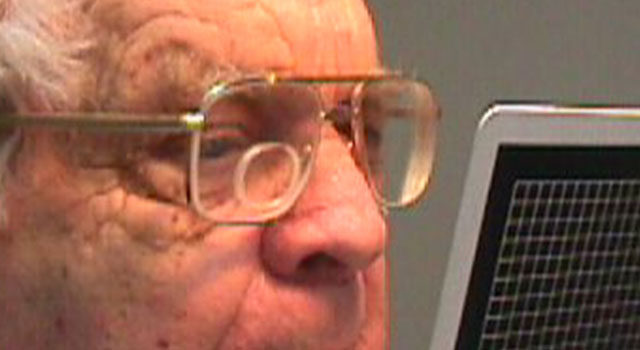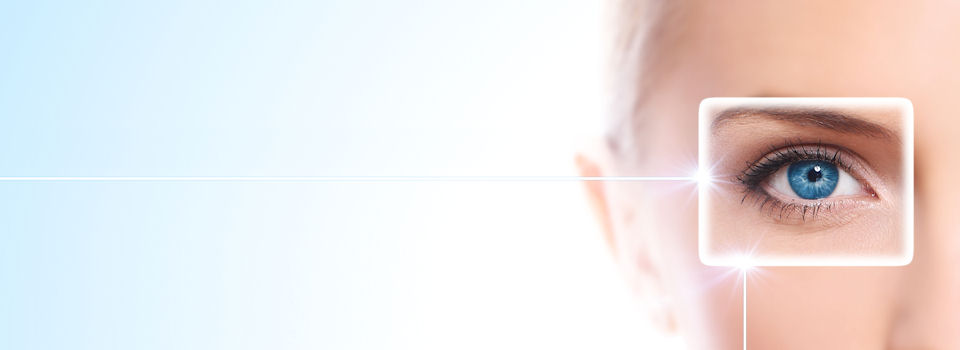 By Richard J. Shuldiner, OD, FAAO, FIALVS, Chief Clinical Editor
By Richard J. Shuldiner, OD, FAAO, FIALVS, Chief Clinical Editor
In 1960, at the age of seven, Wayne F. was diagnosed with amblyopia in his left eye (commonly referred to as Lazy Eye), but it was left untreated. As an adult, Wayne scheduled regular eye exams every few years and received new glasses each time the vision in his right eye changed. In November of 2019, it was time to renew his driver’s license. During all previous DMV visits, Wayne could read the vision charts with the help of glasses. This trip was different.
How Wayne Suddenly Became a Low Vision Patient
Wayne’s vision had slowly deteriorated to the point where the DMV eye chart became impossible to read, and, to his surprise, his license was revoked. Wayne scheduled an appointment with his eye doctor to get new glasses. He expected that a new prescription would improve his vision enough to get his driver’s license reinstated. It also seemed like an opportunity to get new frames and a new look. That’s when Wayne received the news that dry macular degeneration had developed in his right eye, and that new glasses would not improve his vision. He was told, “Nothing more can be done.”
Wayne was devastated. Confusion and worry took over as he asked himself, “How will I get to work? How will I pay the mortgage? How will I support my family? What will become of me?”
Low Vision Patients Have a Reason to Be Upset
ALL low vision patients are upset. Every one of them. And it doesn’t matter if they have a happy disposition, a good attitude or have “accepted” it. They are upset.
As we know, Wayne is not alone. Many patients are struggling with the shocking news that new glasses will not restore their vision. Loss of vision is one of the major fears that people have. When it happens, the upset can be truly debilitating.
Definition of Low Vision
What exactly is “low vision”? There are many ways to say it, but for me, this is the most understandable: Best corrected vision is insufficient to do what you want to do.
The definition contains two variables: vision and task— the amount of vision available to work with, and the tasks the patient wants to be able to do. A person with no visual goals does not have low vision, regardless of the extent of vision loss.
What Is it Like?
Consider the plight of most of the low vision patients we see. They have had decent vision for most of their lives. They needed glasses at some point, for any of the refractive reasons, including presbyopia. Some solved their conditions with glasses, others with contact lenses, vision therapy, or a surgical procedure. In each case, these solutions enabled them to see well enough to do what they wanted to do.
Now, after scores of eye examinations over the years, they once again don’t see well. Still confident that their vision can be corrected, they make an appointment with clear expectations and intentions: stylish new frames, better contacts, clearer vision to enjoy life and be productive. After all, they’ve been through this many times. Only this time, it doesn’t happen.
Instead, they are told they have an “eye condition” that has caused them to lose vision permanently!
And, they are told that if there is a treatment, it won’t bring back the vision they have lost!
And, they may lose more vision!
And it could happen at any time!
And they might go blind!
And lastly, they are told, “There’s nothing more we can do!”
Each sentence stabs like a knife.
What Being Upset Is All About
Surprisingly, there are only three things that upset human beings.
- Unfulfilled expectations
- Thwarted intentions
- Undelivered communications
Think about any time you have ever been upset. Regardless of the circumstances, regardless of who you think was to blame, regardless of what “they” did, regardless of the topic or whom it was with, the upset falls into one or more of the above three categories.
No one expects to lose vision permanently.
No one expects to hear these words from their eye doctor: “There’s nothing more that can be done.”
The expectation is that the doctor will have a solution to the problem.
The intention is to get new glasses, see better, get new frames and have a new, fashionable look.
They walk out in a daze, unable to communicate or even think clearly.
Upset Reactions
Three things happen to a human being when they become upset:
- A shift in reality
- A loss of affinity
- A decrease in communication
Everyone knows not to make decisions when upset. Why? Because the shift in perception of reality leads to bad decisions. We’ve all experienced a reduction in both love and appreciation when we are upset with a loved one. And, we all know that getting someone to open up and communicate when they are upset is nearly impossible.
Words From an Eye Doctor
Life is full of unexpected and upsetting events and, like a flash of lightning, life can change in an instant. An event, such as being told you have Macular Degeneration (or some other vision-affecting eye condition) and that new glasses won’t help, becomes so upsetting that clear thinking is virtually impossible. What I’ve seen over the years while working with low vision patients is a state of chaos, of not knowing what to do, who to turn to, and how to deal with permanent vision loss. Confusion and fear take over as people have no idea what their lives will be like or what they should do.
Providing a Future
When faced with “going blind,” all the hopes and dreams of the future seem to be destroyed. The idea of having time to read great novels, travel to see famous sights, watch the grandchildren play their sports, and more is crushed in their minds. The future they have imagined is gone.
This is where low vision care comes in. People need a future to live into. Dr. Richard Shuldiner can give them that and reduce the turmoil they feel.
We are telling our patients today: “There is life after vision loss. There are low vision doctors who can help to keep you doing those things you love. Your life is not over.”
Advanced LOW VISION CARE is available at Low Vision Optometry of Southern California and a fulfilling life is attainable. Low vision glasses (i.e. telescopes, microscopes, prismatics, filters, etc.), low vision devices, adaptive technology, large print materials, and auxiliary professionals, such as Occupational Therapists and Orientation/Mobility specialists are available. Dr. Richard Shuldiner is a member of the International Academy of Low Vision Specialists and has years of experience treating and caring for low vision patients.
This article first appeared here: https://emailactivity1.ecn5.com/engines/publicPreview.aspx?blastID=2606173&emailID=387066764


